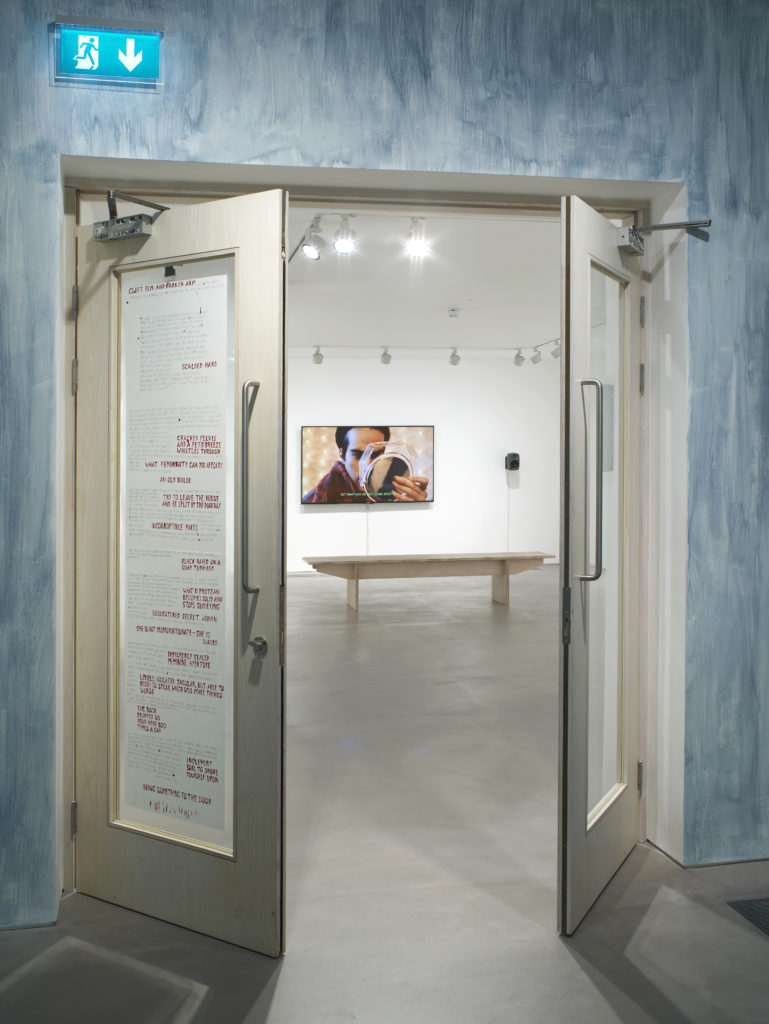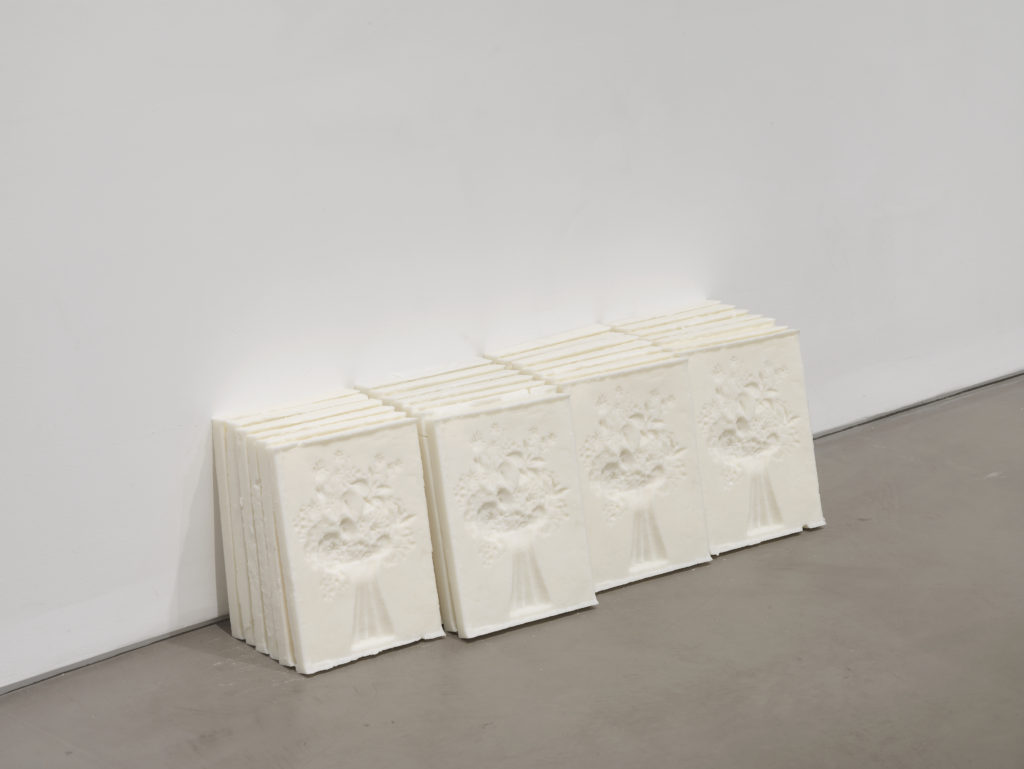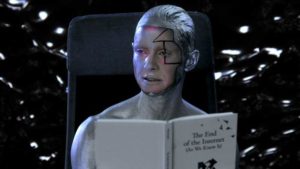Jamie Crewe’s first London solo exhibition, Female Executioner at Gasworks, rewrites the 19th century book Monsieur Venus: A Materialist Novel. Loaded with passion and pain, the original text tells the moral tale of the relationship between a cross-dressing upper-class woman who takes a male flower maker as her lover, slowly shifting his gender towards a more characteristically feminine one. The author, Rachilde, was a provocative writer and pornographer, famous for exploring themes of identity, gender, beyond-conventional relationships and even posthuman ideas.

Crewe’s retelling expands and actualizes this narrative. Faithful to Rachilde’s decadent and symbolic trajectory, the Glasgow-based artist fills the gallery’s two spaces with a playful selection of different works and various mediums, including video, prints, text pieces, and installation. This multifaceted approach also appears conceptually as Crewe brings to life a liminal space between a binary notion of gender, as well as history, fiction, autobiography and social conventions.
At the entrance to the exhibition space, suspended from the ceiling at eye-level hangs a beautiful white wax tablet with an imprint of a bouquet of flowers. These Peony blooms are a bourgeois Victorian symbol of feminine availability, and a reference to the character of the young florist in the historical romance, who later becomes a mistress. Crewe installed the work on the threshold of the gallery, as if to emphasize an entrance to a different, fictional world, like the cover of a book. Behind this awkwardly positioned-yet-powerful installation, placed on the floor against the white wall is a collection of identical objects. The individual three dimensional wax print changes every day in rotation. Echoing Rachilde’s commitment to Symbolism, this layered piece offers a sensory experience that cannot be put into words. It unfolds over a complex presentation of individuality, gender and subjectivity, bringing a sense of empathy referring to several different characters at once.

Walking past the tablet, the spectator enters a conventional ‘white cube’ exhibition space. Projected from a TV screen, the most distinguished artwork is a new video commission called ‘Adulteress’. This 22-minute video is a retelling of Chapter 16 of the original Monsieur Venus composed of three layers, and following documentary footage of a character with a masculine appearance, Crewe’s lover, throughout the day.
While the camera is a truthful witness, the scenario seems somehow performative. The protagonist is chauffeured to a house, where, surrounded by friends, they are dressed up and transformed into a femme countenance. The process of ‘becoming’ feels comfortable and caring. Unlike Rachilde’s tale, it is done in an open and embracing social environment. On top of this footage appears text, taken from Monsieur Venus and echoing the fictional 19th century narrative over this contemporary autobiographical scene. The jazz music soundtrack brings an atmosphere of playfulness and improvisation. These three layers peak in the final scene of ‘Adulteress.’ Night falls, the transformation is complete, the lover takes a walk swathed in black lace. The image becomes purely cinematic, and for a moment, the dark original tale merges with the Crewe’s life story, where gender and subjectivity becomes a playful tool in one’s own hands.

On the door leading to the second room in Gasworks are the opening words of Chapter 17. The scene takes the spectator to the heart of the forbidden love tale, and we enter Crewe’s installation, which follows this description. The walls described as “blue as cloudless sky” are painted in woad pigment, a shade that matches the fiction and offers a theatrical illusion. The painting itself is rough and reveals the artist’s actions in exposed brushstrokes. In Monsieur Venus, Rachilde places a wax anatomical model at the center of her description of the room. In response, Crewe offers a simple yet thoughtful central piece in his exhibition. ‘Wax Figure’ is a corpse-like sculpture fashioned from a sheet of latex placed on carton boxes. The rectangular horizontal shape is reminiscent of a lying body. Subtly, with a sense of drawing, Crewe has burnt an illustration of a face into the latex. The anatomical figure, which Rachilde points to as a witness to the painful and forceful hidden romance, is recreated by Crewe from empty cardboard packages and cartoonish mark-making. Here too, the artist chooses to lighten the tragedy, releasing gender from the burden of moral and social convention.
The final passage of the Female Executioner is another piece of prose. On the door opposite Chapter 17, is an autobiographical stream-of-consciousness, only legible when leaving the room. The handwritten and intimate vignettes, phrased in a diary-like tone, describe the physical and psychological effects of questioning gender through one’s own body, of being exposed to and opposing the social gaze. Crewe chooses to end the tale on a very personal note, the voice of an individual, a direct and straightforward signature. Here, empathy is created between the spectator and the artist, and with all the other characters’ performances in a playful narrative. The signing note in Crewe’s ‘novel’ transforms the dark secretive power-play of identity, politics and love to propose understanding; looking beyond norms and expectations of gender subjectivities.**
Jamie Crewe’s Female Executioner is on at Gasworks, running January 26 to March 26, 2017.
















